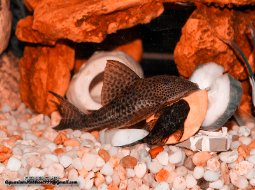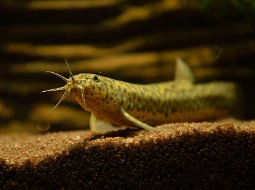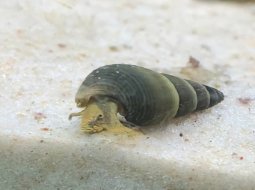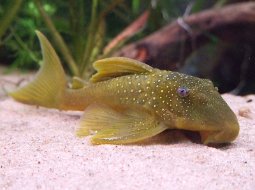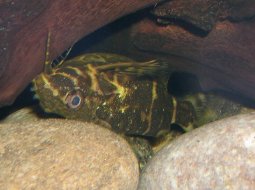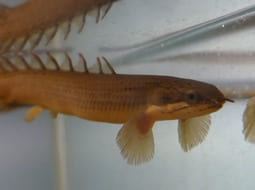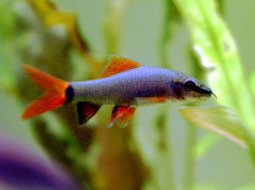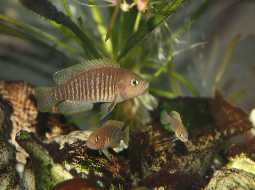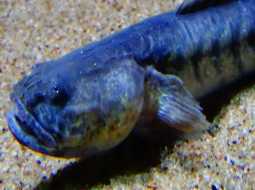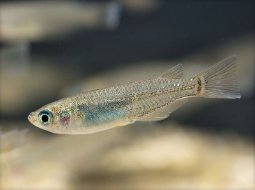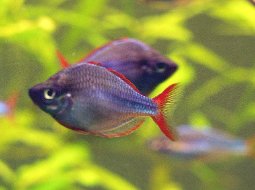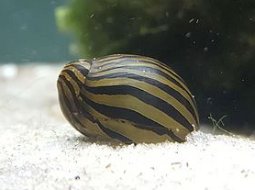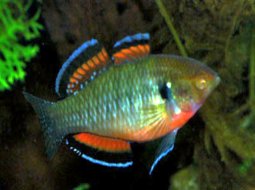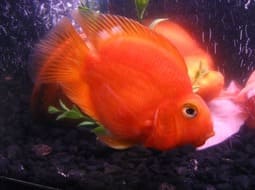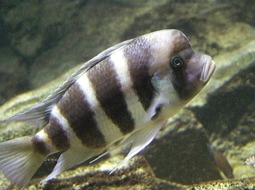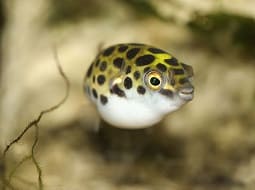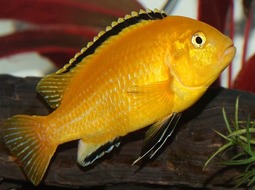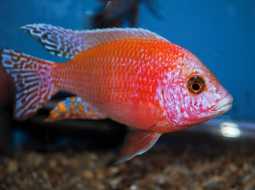
Loading Aqualapp ...
Care and Compatibility of Pearl Cichlid - Altolamprologus Calvus
Introduction
The Pearl Cichlid has a laterally compressed body and a prominent head with a pronounced jaw. Their coloration can vary, but they are generally dark-toned with pearl-like spots or dots on their body. Males are usually larger and have longer fins than females.
Behavior
The Pearl Cichlid, also known as Altolamprologus Calvus, is a fish native to Lake Tanganyika and Lake Malawi in Africa. It is known for its unique appearance and interesting behavior. They are territorial and aggressive fish, especially during the breeding season. They require a spacious aquarium with hiding places and rocky areas to explore.
Sexual Dimorphism
Sexual dimorphism in Altolamprologus calvus is minimal and difficult to distinguish. Both males and females have a similar appearance, though males may display slightly more intense colors and increased aggression during breeding season.
Reproduction
Breeding Pearl Cichlids can be challenging. They are open water spawners, and males will establish and defend territories to attract females. Females will deposit their eggs on flat surfaces or in caves, and males will fertilize the eggs. After hatching, the fry are cared for by both parents and feed on their yolk sac until they are ready to consume live foods.
Aquarium Conditions
Altolamprologus calvus, commonly known as the calvus cichlid, requires an aquarium with plenty of rocks and caves to create its territory. It prefers alkaline water and a warm temperature. Aquarium décor should include large rocks and sand substrate. Maintaining water quality is crucial and providing a balanced diet.
Feeding
They are carnivorous fish and primarily feed on small crustaceans and other aquatic organisms. In the aquarium, they can be fed with commercial foods in the form of pellets or flakes, but it is also beneficial to include live or frozen foods in their diet, such as brine shrimp, daphnia, and shrimp.
Complexity
Caring for Altolamprologus calvus can be moderately challenging. They are territorial fish and can be aggressive towards other cichlids. It's recommended to keep them in a larger group or in a African cichlid tank. They are carnivores and accept a variety of foods, but prefer live and frozen foods.
In case you need more help, or if you want to know into any topic related to the Altolamprologus Calvus (Pearl Cichlid) and even any other species you can use the forums to ask what you need.
To do an analysis more detailed about coexistence and behavior of Altolamprologus Calvus (Pearl Cichlid) use the Aquarium simulation tool, if you do this you can test different ways to combine the Pearl Cichlid with other fishes giving the dimensions and space on you aquarium, on this way you can known the optimal configuration for keep the fishes that you want.
You can also find out the 26 species compatible with the Altolamprologus Calvus (Pearl Cichlid) can live together.
Note: The parameters of the water such as PH and temperature are also used to calculate the compatibility of the species.
Compatible species (26)
Compatible (7 Species)
Territorial fish can usually live with fish protected with armor, since they cannot harm them because of their tough skin, what must be taken into account is to have an aquarium with favorable dimensions so that each fish can delimit a territory, since that most armored fish are also bottom fish and like to be looking for places to hide.
Compatible without any restriction
With Reservation (3 Species)
Compatible in some cases, it depends on the nature and personality of the fish.
Showdown over territory (4 Species)
Fish can live together as long as the space is spacious enough to delimit a territory, otherwise there may be aggressions for competing for the territory.
Pueden convivir juntos si son varias hembras o una pareja de hembra y macho, dos machos juntos podrían compartir acuario si hay mucho espacio.
Considerable size difference (4 Species)
They can coexist while they are similar in size or the size difference is not very abysmal, since as the fish grows it increases the chances of eating its partner that did not grow much.
Food competition (1 Species)
They can live together but you have to be careful since it is likely that the fastest fish will take all the food and leave nothing for their partners who are slow swimmers, so you have to make sure that everyone can eat.
Compatible if space is enough (7 Species)
They can coexist together if the aquarium they share is large and spacious enough for both species to feel good, as some fish may attack others to feel that they have little space and try to eliminate the competition.
Pearl Cichlid
Altolamprologus Calvus
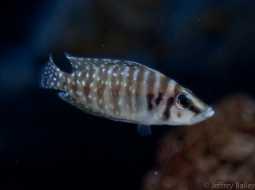
- Ph: 7.8 - 8.6
- Temperature (c°): 23 - 26
- Measures: 10 cm - 15cm
- Aquarium Capacity:
75 Liters - 20 Gallons - Alimentación: Carnivores
- Colores: Black, White
- Comportamiento: Likes to take refuge, Peaceful, Semi Aggressive, Territorial, Territorial with its species
- Habitad: African
- Preferencias del Acuario: Rocks
- Tamaño: Medium
- Taxonomía: Cichlids, Fish
- Tipo de Agua: Sweet water, Tropical waters
- Velocidad de nado o movimiento: Normal, Slow
- Zona de Nado: Swim in the middle of the aquarium

